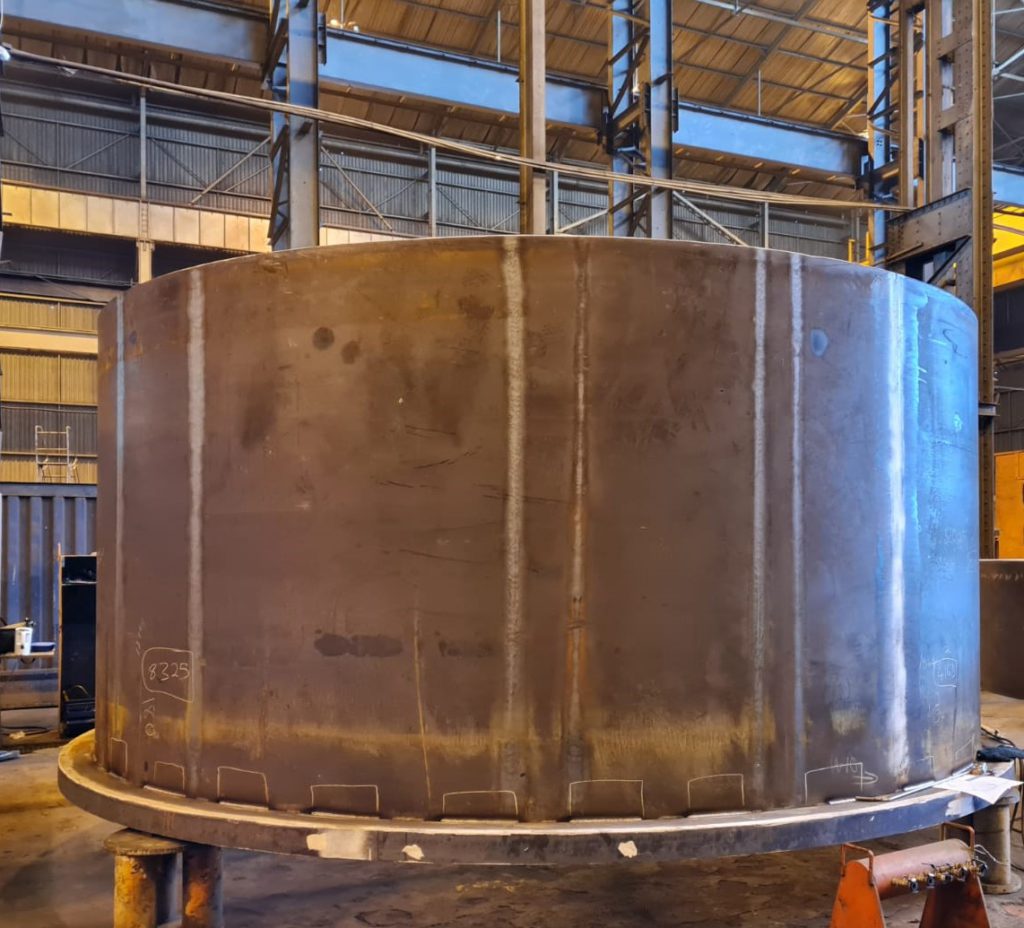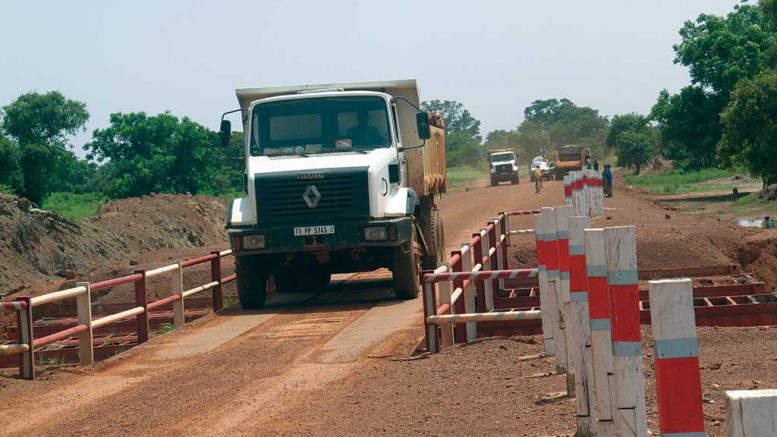Gold analysts are pointing to substantial levels of pent-up demand for mergers and acquisitions (M&A) activity in the mid-tier and emerging producer space in the coming months as the world emerges from the pandemic crisis and people can conduct physical due diligence again.
One of the hot picks tipped for acquisition is Orezone Gold (TSXV: ORE, US-OTC: ORZCF) and its Bomboré gold development project in Burkina Faso.
While the major gold producers have largely completed as much consolidation as possible and are now sporting diversified, sustainable production profiles, the producers are looking to fill reserve depletion organically, focusing on brownfields exploration, or picking up single-asset development projects as potentially the likes of Bomboré.
The market has seen several of these strategic tie-ups in recent months, including the acquisition by Newmont (TSX: NGT; NYSE: NEM) of GT Gold and its Tatogga project in British Columbia. Further afield, we’ve seen majors extract improved efficiencies by acquiring complementary assets, such as Newmont and Barrick Gold (TSX: ABX; NYSE: GOLD) forming a joint venture in Nevada in July 2019 – Nevada Gold Mines – where both miners generate a substantial portion of their production from multiple assets.
One area that has seen a boom in gold exploration, development and mining activity is West Africa. Recent activity includes Barrick selling its undeveloped open-pit Massawa project in Senegal to Teranga Gold (TSX: TGZ) late in 2019. The latter deal opened the significant potential for operating synergies between Teranga’s producing Sabodala mine, only 20 km from Massawa.
Australia-based West African Resources (ASX: WAF) recently announced the acquisition of the 1.1 million oz. Toega gold project from B2Gold (TSX: BTO; NYSE: BTG), as it aims to increase Sanbrado’s gold production and mine life. Toega is located within trucking distance of Sanbrado.
But West Africa stands out among the world’s jurisdictions as particularly supportive of mineral exploration, mine development and mining, according to Orezone Gold’s CEO Patrick Downey.
Orezone has recently kicked off construction of its fully funded US$189 million Bomboré gold project in Burkina Faso, in which it owns a 90% stake.
“Projects in West Africa have a long history of being built ahead of schedule and under budget,” Downey says in an interview.
According to him, about 11 recent mining projects in West African jurisdictions were completed either on or ahead of schedule and on or under budget, something that makes them increasingly appealing to investors.
The key, according to Downey, is that substantially all of the recent projects completed in Burkina Faso were built by engineering, procurement, and construction management (EPCM) contractor Lycopodium Minerals. For this reason, it has also awarded the Bomboré EPCM contract to Lycopodium in January.
“With more than 12 mines built in West Africa, Lycopodium’s track record of building efficient mines on time and budget is unparalleled. Lycopodium is very familiar with Bomboré, having performed the 2018 feasibility study, the 2019 updated feasibility study, and the previously completed front-end engineering and design,” says Downey.
Lycopodium has a demonstrated track record in Burkina Faso, recently delivering successful EPCM gold projects at the two million oz. per year Sanbrado project for West African Resources, adjacent to Bomboré, the three million oz. per year Houndé project for Endeavour Mining, and the 2.5 million oz. per year Wahgnion project for Teranga Gold Corporation. Significantly, Lycopodium has just completed the 3.3Mtpa Yaouré project for Perseus Mining in Côte d’Ivoire, ahead of schedule and under budget during the covid pandemic.
Last year, OreZone released a feasibility study for Bomboré, which outlined a staged oxide-sulphide project producing an average of 117,800 oz. of gold annually at all-in sustaining costs of US$730 per ounce.
The Bomboré gold project is host to a total oxide reserve of 52.5 million tonnes at 0.69 gram gold per tonne for 1.2 million contained oz. with additional sulphide reserves of 17.6 million tonnes grading 1.19 grams gold per tonne for a total of 675,000 ounces. These are contained within a measured and indicated resource inventory of 107 million tonnes of oxides at 0.55 grams gold and 123 million tonnes of sulphides at 0.8 grams gold.

The Bomboré gold project is within a 15 km radius of more than 10 million oz. gold resources. Credit: Orezone Gold.
The associated initial capital for the oxide portion of the project was estimated at US$153 million, with an additional US$63 million allocated for the sulphide expansion commencing operations in the third year. At a 5% discount rate, the associated net present value has been estimated at US$361 million with a 43.8% internal rate of return.
Orezone is planning on pouring first gold from Bomboré in the second half of next year.
On January 21, Orezone announced it had secured a financing package totalling US$182 million and consisting of US$96 million in senior secured loans, a US$35 million convertible note, and a US$51 million bought-deal equity offering to fund Bomboré into production fully.
The finance package has allowed Orezone to rapidly advance critical items on its to-do list, including ordering long-lead items such as the ball mill in parallel with starting site earthworks.
Downey expects the first concrete pours to take place in June, which according to the so-called Lassonde Curve, should precipitate the start of a corporate rerating and about a 125% rise in equity values as the company enters the construction phase proper.

Orezone has placed orders for long-lead items such as the ball mill, under construction here. Credit: Orezone Gold.
According to Downey, the construction milestones set the stage of a coveted equity rerating as the project advances closer to production and ever more appealing in the eyes of potential suitors.
“M&A activity takes place when a particular set of conditions are met, including timing. But more importantly, investors are looking for clean projects because they don’t want future value capped through dilutive construction finance packages or by the proponent selling future metal streams.
“I think West Africa – and hopefully Bomboré – will be part of future M&A because single asset companies rarely make for great business propositions,” he says. “But before we would consider any type of transaction, we first want to demonstrate the growth potential of the asset.”
For Orezone to access all areas within the Bomboré mining permit required for the process plant, surface infrastructure, tailings storage facility, and off-channel reservoir, Orezone had to relocate an entire village.
The company built over 1,100 private homes, public buildings, and community roads and moved over 370 families into their new homes.
According to Downey, with that significant social investment now complete, it opened up new prospective areas for exploration, which is a key value driver.
“One of our top priorities n 2021 is to start exploratory drilling on high-priority oxide and sulphide targets to extend Bomboré expansion potential,” he says.

Bomboré exploration potential. Credit: Orezone Gold.
To this end, the company has sold 50% of the silver by-product production to EURO Resources, a 90%-owned affiliate of Iamgold (TSX: IMG; NYSE: IAG). The streaming deal gave OreZone US$7.15 million in exploration funding in exchange for a minimum of 37,500 oz. silver from the mine, capped at 375,000 ounces.
“We believe the silver stream is an attractive non-dilutive source of capital to fund exploration on high-priority oxide and newly identified high-grade sulphide targets during construction. Due to the lack of comprehensive silver assays, no silver production was included in the 2019 feasibility study for Bomboré,” says Downey.
The Bomboré project spans over 13 km and is yet to be fully defined. Several isolated mineralized zones are believed to be continuous but have not been drilled sufficiently to confirm such continuity. Two such zones identified as high priority drill targets are the P17 sulphide zone and the hanging wall oxide zone at Maga.
For the P17 sulphide zone, recent drilling has defined high-grade sulphide resources at P17S with grades more than double that of the overall average grade for the project. Drilling just north of the P17S reserve pit indicates that the deposit is still open and trending towards the surface at P17, situated 1.2 km to the north. Historical drilling at P17 has returned excellent intercepts, and a sizeable untested gap exists between these two areas. Future drilling is planned to infill this large, underexplored area.
For Maga, oxide targets in the hanging wall were previously inaccessible before relocating families to their new resettlement villages. Limited previous drilling and auger drilling and historic artisanal gold workings outside of current reserve pits provide a strong indication that the mineralized structures hosting the current reserves display good lateral continuity and are highly prospective to reserve expansion.
In addition, high-grade sulphide inferred mineralized zones are present directly below or along strike of several sulphide pits in the current mineral reserves. The previous drilling suggests that these zones are wide and continuous at Siga South, where the sulphide zone definition drilling is most advanced. The company has identified three primary target areas (Maga, Siga South, and Siga East) for sulphide resource drilling that warrant future exploration.
Bomboré also has 14,547 hectares of exploration claims surrounding its mining permit, with numerous prospective targets that have been identified, including the KT and P13 prospects located to the northeast and the southwest of the mining permit, respectively.


Be the first to comment on "With gold M&A heating up, could Orezone’s Bomboré project be ripe for the picking?"